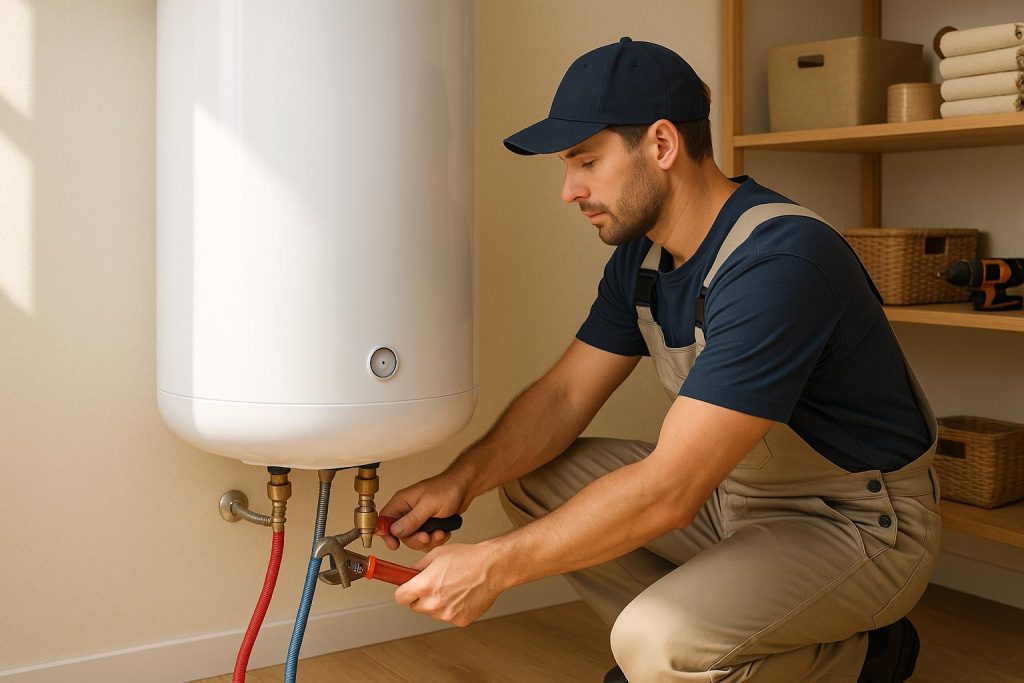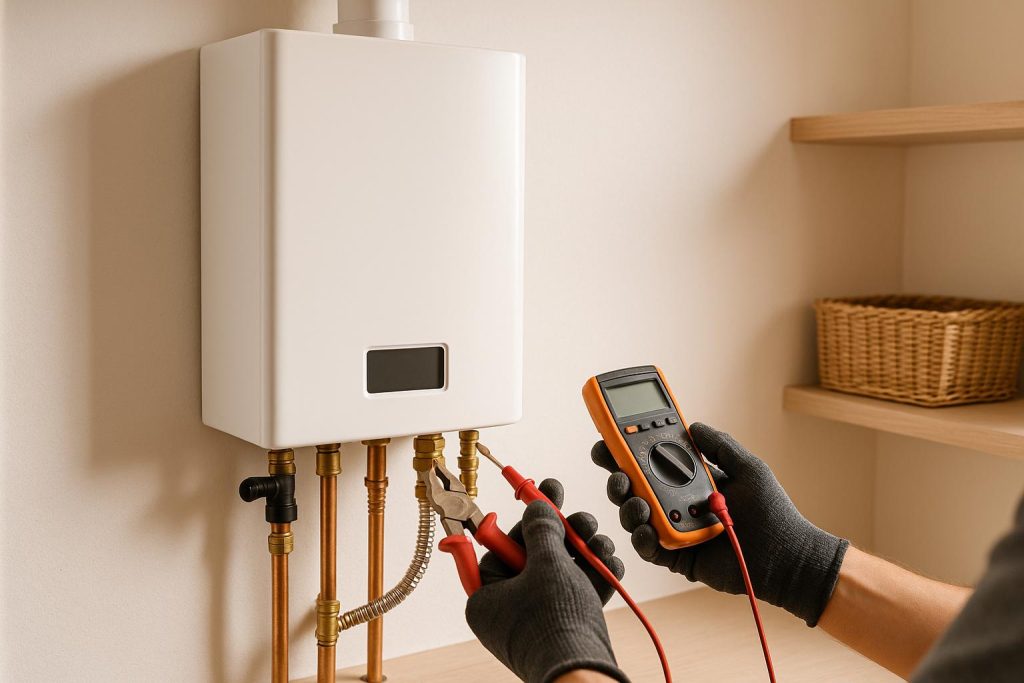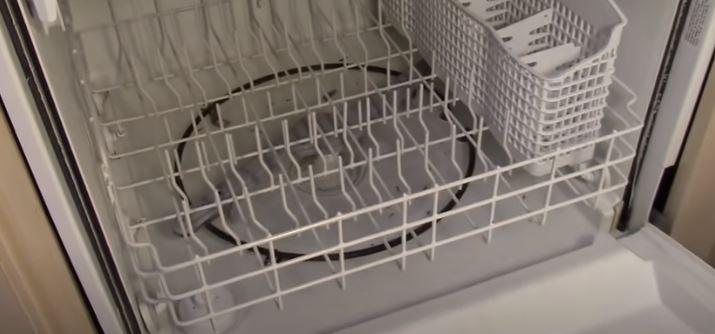
If your dishwasher is not spraying water, the circulation pump is clogged or damaged, or the spray arm is jammed, broken, or clogged. It could also be caused by a malfunctioned float switch, a faulty water inlet valve, or a blocked water supply hose.
Below is a quick summary of this post:
Causes
- Clogged Spray Arms: Over time, debris and mineral deposits can clog the small holes in the dishwasher’s spray arms, hindering water flow.
- Water Inlet Valve Issues: Problems with the water inlet valve can prevent water from entering the dishwasher, leading to a lack of water pressure for spraying.
- Pump or Motor Failure: A malfunctioning pump or motor can impede water circulation and prevent the spray arms from spinning.
- Blockages in Filters or Drain: Clogged filters or a blocked drain can disrupt the dishwasher’s overall operation, affecting water flow.
What to Do
- Inspect Spray Arms: Remove the dishwasher’s racks and inspect the spray arms for clogs. Clean them thoroughly by removing debris and mineral deposits from the spray arm holes.
- Check Water Supply: Ensure that the water supply to the dishwasher is turned on and that there are no kinks or obstructions in the water inlet hose.
- Inspect Water Inlet Valve: If the water inlet valve is faulty, it may need replacement. Consult the dishwasher’s manual for guidance on accessing and replacing the valve.
- Examine Filters and Drain: Clean or replace any clogged filters and ensure the drain is free of blockages to maintain proper water flow.
- Run Hot Water: Before starting a dishwasher cycle, run hot water from the sink tap until it’s hot. This can help improve water temperature and pressure.
- Check Detergent Dispenser: Ensure the detergent dispenser is functioning correctly, as it plays a role in releasing detergent at the right time during the cycle.
- Consult a Professional: If you’ve checked the above factors and the issue persists, it may require a professional technician to diagnose and repair more complex problems like motor or pump failure.
How to Fix a Dishwasher that Won’t Spray Water

When troubleshooting a dishwasher that is not spraying water, you need to be methodical. Start by checking if the dishwasher is being supplied with water and then decide if you have to fix the water supply or the dishwasher itself.
To do this, open your dishwasher and check if the tub is full of water (to just below the heating element). You can also start a cycle and open the door mid-cycle to check if the dishwasher tub is being filled with water.
If there is water in the tub but the same is not being sprayed on the dishes, it is a sign of a clogged or faulty circulation pump or a jammed, cracked or clogged spray arm.
On the other hand, if there is no water filling the dishwasher tub then you have a clogged or defective water inlet valve or float assembly.
Let us now look at how to troubleshoot each:
1. Inspect the Water Inlet Valve
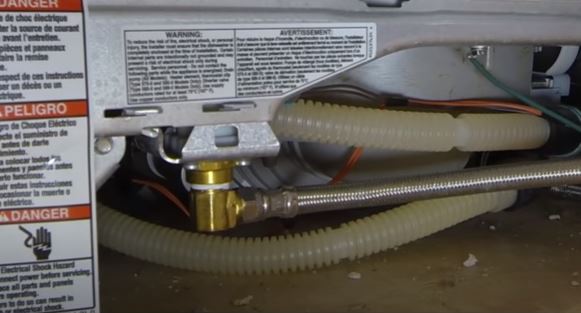
A dishwasher water inlet valve is located on the bottom left corner of the dishwasher. To access it you will need to first remove the lower access panel also known as a toe kick.
It is connected to the dishwasher’s water supply hose which is in turn connected the kitchen sink’s hot water supply line with the help of a tee, which allows the installation of shut off valve.
The first thing you will need to do is to make sure that the shut off valve is fully opened. A fully opened shut off valve should be turned all the way counterclockwise.
Before starting any work on the dishwasher, plug off or turn off power at the circuit breaker to avoid the risk of electrical shock.
This is how to fix a dishwasher inlet valve that is not filling with water:
- Turn off water to the dishwasher at the shut off valve.
- Remove the toe kick. It is usually connected to the dishwasher using 2 or 4 screws.
- Disconnect the water supply hose from the inlet valve. You will need a wrench for that. Have some towels nearby as some water will drain out when you disconnect the hose.
- Now, to check out if the problem is with inlet valve or the hose, put the hose inside a bucket and turn on the water at the shut off valve. If the water pressure is sufficient, the hose is good. On the other hand if hardly any water comes out, you will need to replace the hose.
- To remove the water inlet valve, disconnect the bracket which secures it to the frame. You may need a T-20 screwdriver or head.
- Pull out the 2 wires which send command to the inlet valve from the float switch.
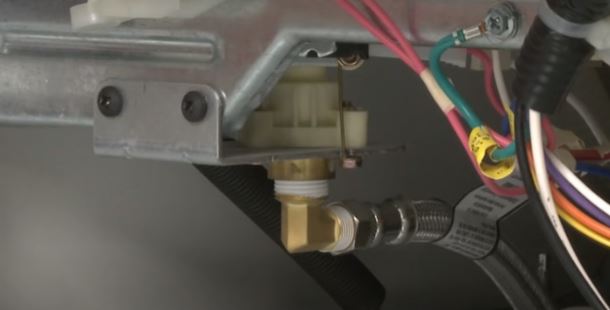
- Use pliers to pinch the clump connecting the water outlet hose from the valve and pull it out.
- To access the valve’s screen, disconnect the brass elbow (plastic in some models).
- Check if the screen is clogged. Pull it out using a pair of pliers ad clean it in the sink.
- Put it back and connect the valve and the hoses back.
- To check if the inlet valve is faulty, use a multimeter to test for continuity across the 2 electrical terminals. If there is no continuity, the valve is defective and will need to be replaced.
2. Check the Float Assembly
A dishwasher’s float assembly controls the water level inside the dishwasher tub by turning the water inlet valve on and off. If the switch is stuck in the off position, it will fail to turn on the valve and you will have no water inside the dishwasher.
To check if that is the problem, try to move the float assembly up and down. Is it moving freely? As you do that, you should also hear a clicking sound as the float switch engages and disengages.
To be sure, use a multimeter to check if there is electrical continuity across the float switch. Replace the switch if there is no continuity.
The above solutions address a dishwasher that is not filling and therefore not spraying water. What if there is water inside the dishwasher tub but the same is not being sprayed on the dishes? Here is how to fix the problem;
3. Unclog or Replace the Spray Arm
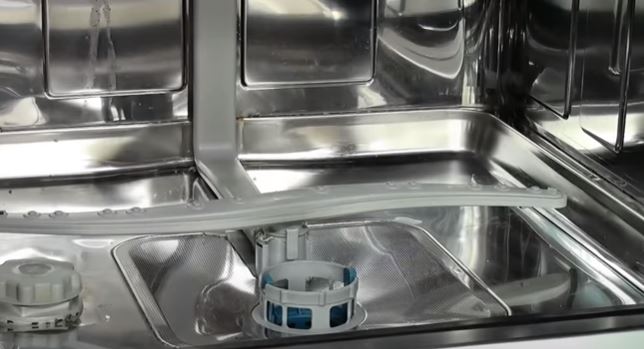
A dishwasher’s spray arm receives water under pressure from the circulation pump and forces it out through small holes which strikes the dishes and cleans them due to the force of the water.
As the spray arm is spraying water on the dishes, it will also be rotating at the same time. That is where the problem for most dishwasher sprays arms begins.
When you overload the dishwasher, there is a likelihood of a pot, folk, spoon, knife, or pan handle dropping and jamming the spray arm. When that happens, the spray arm will no longer spin freely again and as a result it will not be spraying water.
When a dishwasher is not spinning and spraying, you can hear an unusual noise from the dishwasher as the arm tries to free itself.
When that does not happen, the spray arm can crack and as a result it will fail to spray water.
- Start by removing the lower dish rack and placing it aside. Do this slowly as there could be something blocking the spray arm
- Try to spin the arm and check if it will spin freely and easily. If it fails, there is something blocking it.
- To remove a dishwasher spray arm, grab it and twist it a ¼ turn counterclockwise and lift it off.
- Clean the area where the arm was installed.
- Check if the spray arm is damaged. Look for cracks along its edges or if it is outright broken
- If the spray arm is damaged, you will need to replace it.
Another problem faced by dishwasher spray arms is clogging. The clogging can happen inside the spray arm or on the small holes through which water comes out.
If you live in an area with hard water then don’t be surprised if this is the case. Hard water mineral deposits, especially calcium (also known as limescale) will clog the spray arms holes and as a result the spray arm cannot spray water.
To unblock a dishwasher spray arm, disconnect it and soak it in white vinegar. After about an hour, use a wire to poke through hole and make sure that they are all fully opened.
Connect the spray arm back and check if it will start to spray properly again.
4. Check the Circulation Pump
A dishwasher circulation pump is found below the spray arm. The pump is responsible for pumping water from the tub to the spray arm. It is also fitted with a filter to prevent debris from damaging its internal components.
With time, food scraps and grease can clog the filter, meaning that no water is being pumped to the spray arm and as a result the dishwasher will not be spraying water on the dishes.
The first thing you should do is to remove the lower dish rack and inspect the filter. In some models you will need to only lift it out but in some you will need to turn it slightly to the left then lift it off.
Clean the motor in the sink using an old toothbrush then put it back. You can also use a shop vac to suck out the gunk from the filter, which is really helpful since you also need to drain the water from the tub.
If a dirty filter is not the issue, you may need to replace the circulation pump. Before going ahead and doing so, check out the video below. It could all you need to do.


